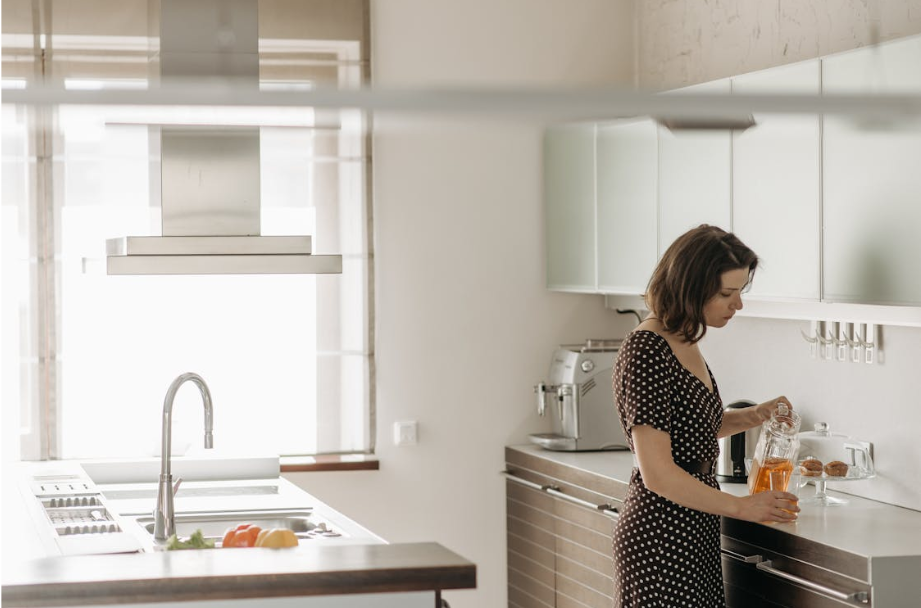Daily routines often follow quiet patterns. You move through the same space, handle familiar tasks, and return to habits that repeat without much thought. The setup around you can support this in small ways. Certain spots in your home become tied to what happens there, like making tea, sitting down to eat, or pausing after work.
Try noticing what’s already happening and letting your space match that pace. When surroundings support simple habits, there’s less to figure out and more room to feel steady throughout the day.
Keeping Health Items Where You Pause
Health items feel more part of the day when placed in spots you already visit. A glass jar near the sink, a tray on the counter, or a shelf by the fridge can hold things like supplements or basic daily items. They don’t need to be hidden or treated like a project. Keeping them visible in places you reach often can support a habit without changing anything else.
Some people use products from USANA Health Sciences as part of their daily routine. It’s not about what’s missing. It’s more about keeping familiar tools in places that match how the day flows. Reaching for something in a spot you already pass through can make it feel like part of what you already do.
Eating Meals at the Same Spot
Having a regular spot for meals helps mark time. It could be a seat at the table, a stool by the kitchen counter, or a cushion on the floor. Eating in the same place gives your body and mind a moment to settle. There’s no need to make it a rule or routine. The space simply becomes tied to meals through regular use.
A consistent eating area also helps meals feel like their own part of the day. The action of sitting down in that spot can signal a shift. Even if the rest of the day feels busy, that area becomes one where you slow down without needing to think about it.
Letting Natural Light Guide Winding Down
When the sun starts to set, the inside of the home can follow that change without needing any plan. Curtains might stay open until the light softens, then lamps come on with a lower tone. It doesn’t need to be exact or measured, just a gentle shift that follows what’s already happening outside.
This change in light helps slow things down. When the surroundings become dimmer, activity starts to ease. There’s no need for a strict bedtime or alarm. Letting the evening light shape the tone indoors gives the body something steady to respond to.
Creating Quiet Corners
Some parts of the home feel better when left alone. A corner without tasks, screens, or goals can give space for quiet without asking anything in return. It might hold a chair, a folded blanket, or nothing at all. The idea is not to design it, but to leave it open.
This kind of space can be a break from places that carry activity. Sitting in a spot like this, even for a few minutes, can shift the pace of the day. You don’t have to fill it with anything. The pause itself becomes part of how the day moves.
Moving Around During Breaks
Taking small walks within your home during breaks can help shift the pace. Walking from one room to another or stepping outside for a few minutes offers a pause without needing to plan anything. The movement doesn’t need to be tied to a purpose. It’s simply part of letting the body reset between tasks.
Short walks can help separate parts of the day. Moving from one part of the house to another can mark a transition without needing a full routine. Even a few steps to another space gives the mind and body something fresh to respond to.
Putting Evening Items in One Area
Evening often brings a slower rhythm. Grouping items like a book, a blanket, or sleepwear in one place helps you settle into that rhythm without extra effort. The space becomes a cue to step out of the daytime flow.
You don’t have to organize this area. Just having everything in one spot means fewer small decisions at the end of the day.
Choosing Calm Background Sounds
Sound plays a quiet role in the feel of a room. Soft music, quiet tones, or nature sounds can give shape to the space. There’s no need for playlists or devices unless you want them. A low sound that plays in the background supports a slower pace without demanding attention.
You can let the sound match the time of day or keep it the same throughout. Whether it’s morning or late evening, the right tone can settle the space around you and help mark different parts of the day.
Setting Your Favorite Chair or Spot
Having a seat that you return to often becomes part of your routine. It doesn’t need to be fancy or special. A chair by the window, a spot on the couch, or a cushion on the floor can give you a place to land when the day calls for stillness.
Spending time in the same spot each day brings a quiet sense of familiarity. You don’t have to do anything specific there.
Using Scent in Different Rooms
Subtle scent can shape how each room feels. A candle, diffuser, or even a well-placed bar of soap adds a gentle signal to the air. Some scents may help with alertness, others with calm.
Changing the scent from room to room gives each area its tone. A light, clean scent that lingers can support the purpose of a room without calling attention to itself.
Letting One Room Stay Free of Tech
Keeping screens out of one area gives your eyes and thoughts space to reset. It might be a bedroom, a guest space, or a corner where you tend to sit quietly.
There’s no need to set rules around it. This room simply becomes known for something different. Over time, returning to it can feel like a quiet step away from the rest of the day.
Keeping Your Bed for Rest Only
A bed that stays tied to rest helps shape the tone of sleep. Reading, eating, or working somewhere else lets the bed stay linked to quiet. It doesn’t need to be treated like a rule. The habit forms naturally when the bed isn’t used for much else.
At night, lying down in a space that holds a single purpose feels different. There’s nothing to sort or organize. The body already knows it’s time to settle because that’s all that’s ever happened in that space.
Space and time shape each other. When your surroundings reflect how your day already moves, small patterns start to hold a steady rhythm. There’s no need to control the flow or reach for perfection. The way your home feels and the way your routine unfolds can quietly work together without a plan.














Leave a comment